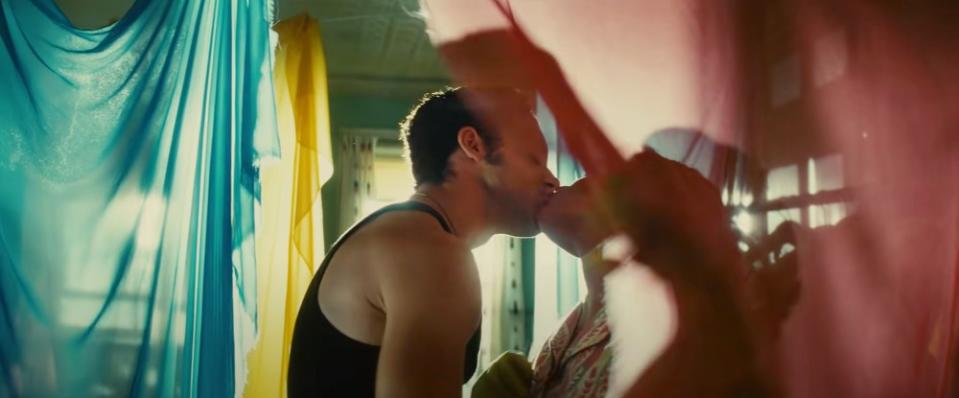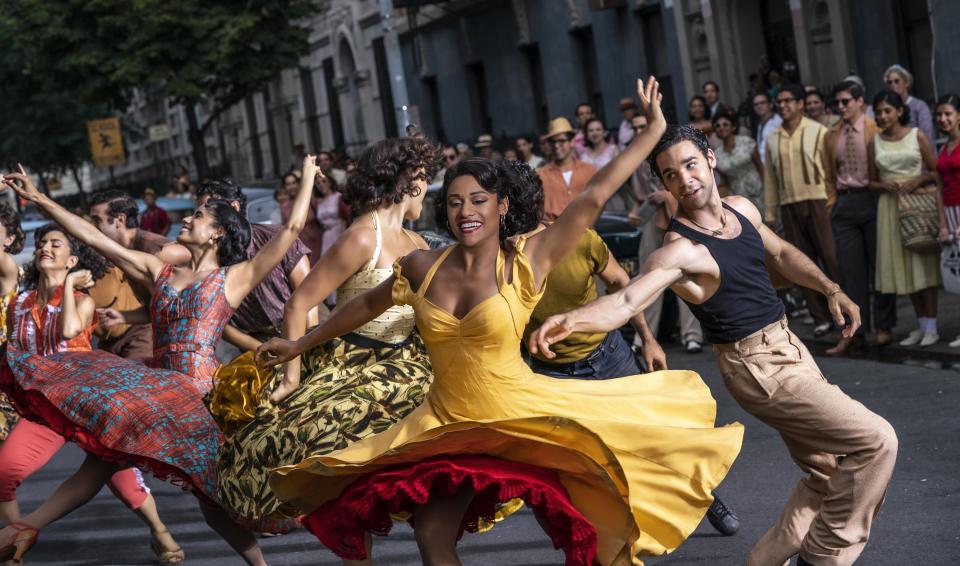‘West Side Story’: The Depth, Color, and Beauty of Janusz Kaminski’s Theatrical Images

Since their first collaboration on “Schindler’s List,” Janusz Kaminski and Steven Spielberg have forged one of the most enduring and fruitful cinematographer-director partnerships in all of American cinema. From the brutally stripped-down realism of “Saving Private Ryan” to the fizzy champagne colors of “Catch Me If You Can” and the threatening sci-fi landscapes of “Minority Report” and “War of the Worlds,” Kaminski and Spielberg have jumped from one genre and tone to another with striking visual ambition and range, always on the lookout for new ground to cover. With their latest movie, a remake of the 1961 musical “West Side Story,” Kaminski and Spielberg took on a genre that they sought to both honor and take in new directions, merging old Hollywood classicism with a dynamically moving camera that distinguishes their “West Side Story” from the more formally composed Robert Wise version.
For Kaminski, it was important to pay tribute not only to the filmed musicals of the Hollywood studio era but to the original, 1957 Broadway stage production of “West Side Story.” “I came here from another country and I always associated Broadway with glamor and beauty,” Kaminski recalled in a recent interview with IndieWire. “Steven and I both had the same interest in preserving the concept of glossy romanticism that you associate with the ’50s and ’60s. I think it would have been wrong to go the other way and make it gritty and bleach out the colors.” To that end, Kaminski embraced the possibilities for high style inherent in the material. “It’s a love story, so why be too delicate and subtle? When you first see Maria on the stairs of her tenement building standing in a pool of light, it’s a beautiful theatrical image that has nothing to do with reality. But neither does people singing and dancing in the streets, and the permission that gives you means your imagination is the only limit.”
More from IndieWire
Steven Spielberg to Bradley Cooper After Watching 'A Star Is Born': 'You're Directing "Maestro"'
'The Tragedy of Macbeth' Cinematographer Bruno Delbonnel Turned Shakespeare Into a Visual Haiku
Even in non-musical sequences depicting the characters’ mundane daily lives, Kaminski took poetic license to create some truly spectacular images. An early interaction between Maria, her brother Bernardo, and Bernardo’s girlfriend Anita could have been a standard dialogue scene, but by blocking the actors amidst brightly colored fabrics hanging in the apartment, Kaminski and Spielberg allowed for a vibrant interplay of light, shadow, and movement. The scene was not storyboarded but evolved organically based on the production design and performances. “Steven had certain requirements that had to be integrated into the apartment set,” Kaminski explained. “There’s stained glass that divides the sewing room from the bedroom, and a window in the door with colorful gels, and there’s fabric stretched across the room with dye drying because Anita works with clothes. Once we started to light we realized we could get some very beautiful effects from the shadows of people behind that particular fabric; the tricky part was getting those effects while still seeing the faces cut through.”

screenshot
“The fabric almost becomes like a screen where the shadows are being projected,” Kaminski continued, adding that the approach to the image all started with the writing, in which the emotional boundaries of the scene became physicalized. “You begin with the idea that Bernardo and Anita are kissing and can’t be too vulgar in front of the sister, who is in the same space,” he explained. “Steven blocks the scene while I’m lighting, and everything grows out of the story and the set. Luckily Adam Stockhausen is a great production designer who had the same intentions as Steven and I, and so did Paul Tazewell, the costume designer. We all wanted to create something that was very unique.”
Kaminski also credited his “A” camera operator Mitch Dubin and Steadicam operator John Buzz Moyer — who used to be a dancer and thus was particularly adept at capturing the movements of the performers — with helping to evolve the film’s visual language, noting that one of the strengths of a Spielberg set is the openness to collaboration. “There’s nothing worse than a crew member who is scared to suggest something because the director might say no,” he asserted, “but Steven is very encouraging.”
If the apartment scenes represented an intimate, character-driven style of filmmaking, the many elaborate musical set pieces in “West Side Story” placed different demands on Kaminski and his crew, as did the multitude of night exteriors photographed on location. Because they were shooting on film (as is always the case in Kaminski’s collaborations with Spielberg) and because Kaminski sought a sharp depth of field, the amount of light required for any given scene was enormous. “The choreography and the dancers are so beautiful that you don’t want the actors in the foreground to be sharp while the people in the second and third rows go out of focus,” Kaminski said. “That means having a lot of light so that you can close the aperture on the lens because the higher the F-stop, the sharper the image. We were shooting the night scenes at around an 8 or 11, which is a very heavy exposure with a lot of lights — it actually looked overlit on set, but with the aperture closed down it looks really great on screen.”

Niko Tavernise
Even for day exteriors like the exuberant “America” musical number, Kaminski augmented sunlight with a large number of fixtures. “The sunlight gives you a certain exposure, but it’s all top light, which is not very attractive,” the cinematographer explained. “This is a glamorous movie, so I brought in a tremendous number of key lights for the actors beyond the top light provided by the sun — we had a whole bunch of 18Ks lined up on the dancers.” Those key lights also helped Kaminski maintain continuity on dance sequences that were shot outside on location over the course of several days. His general approach was to shoot the widest shots when the sun was at its optimal height for attractive lighting (before 10 in the morning or after 5:30pm), and go in for the closer shots where he could have more control at other points in the day, though this wasn’t always an option.
“That’s the job of a cinematographer,” Kaminski asserted, “maintaining the visual coherency and consistency from one day to another night.” Interestingly, Kaminski has found that sometimes this is more difficult on a big-budget production like “West Side Story” than on a smaller film like “The Diving Bell and the Butterfly.” “On that film we had no money but were at the same location at the hospital and could always schedule our big wide scenes when the light was best. It’s more difficult on a bigger production where you have so many people; sometimes you have to just go with the flow because it’s impossible to schedule the performance to accommodate the light. But my job is to never say, ‘I can’t shoot right now.’ I can always shoot. You want me to do a day sequence at midnight? I’ll do it. I’m up for any difficulties you can give me. I have never, ever said no to a director.”
Best of IndieWire
New Movies: Release Calendar for January 14, Plus Where to Watch the Latest Films
'French Dispatch' and 'Last Night in Soho' Start to Lift Stagnant Specialty Box Office
Sign up for Indiewire's Newsletter. For the latest news, follow us on Facebook, Twitter, and Instagram.


